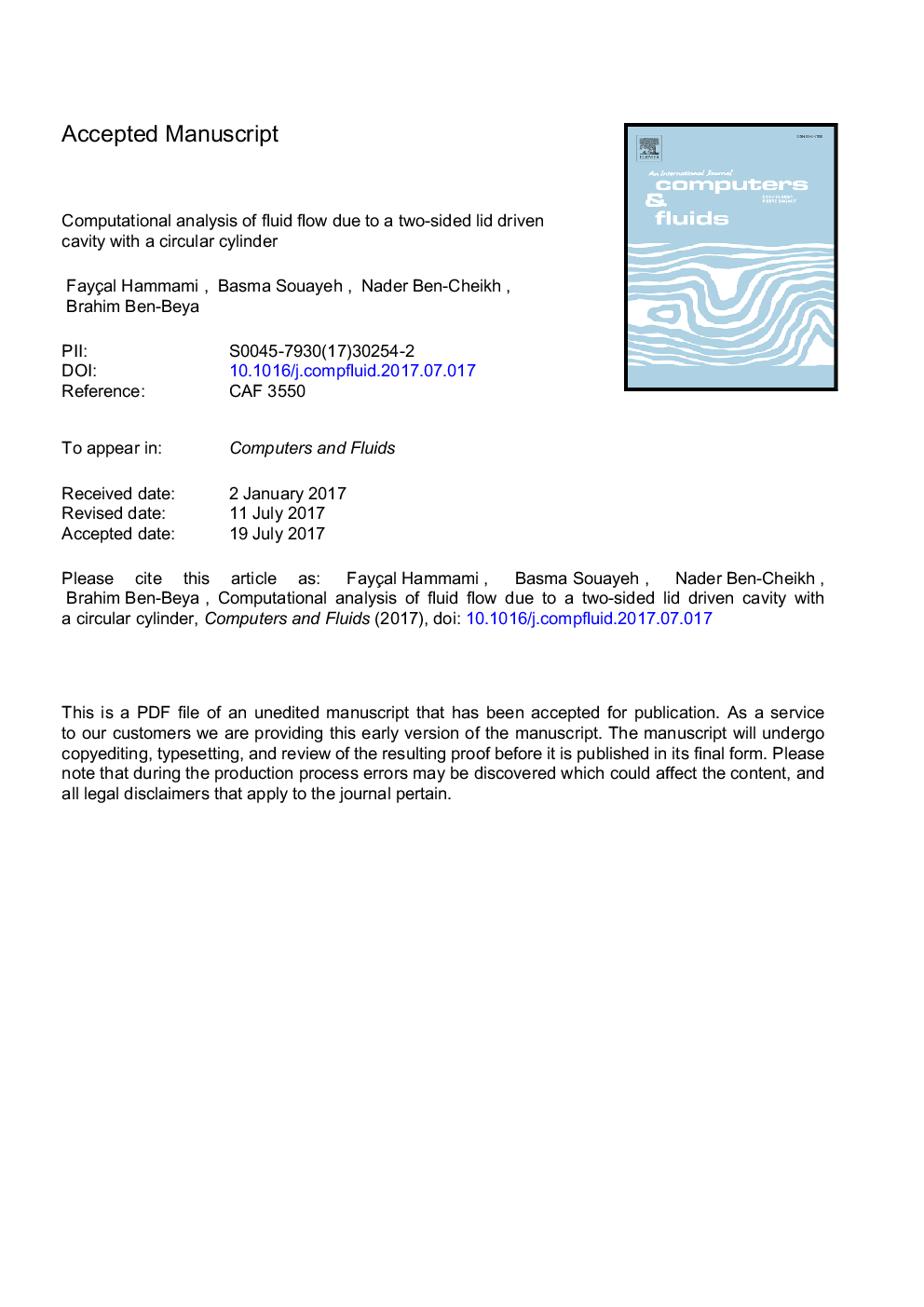| Article ID | Journal | Published Year | Pages | File Type |
|---|---|---|---|---|
| 5011760 | Computers & Fluids | 2017 | 27 Pages |
Abstract
A numerical investigation has been carried out to study the two-sided lid-driven cubical cavity induced by a cylindrical shape at the center. This problem is studied by a finite volume method using multigrid acceleration. The cavity has left and right parallel lid-driven walls and all the other walls completing the domain are motionless. The study covers a wide range of Reynolds number (100â¯â¤â¯Reâ¯â¤â¯1500). By comparing our results by those found in the literature survey, transition from steady to unsteady state in the obstructed cubical lid-driven flow starts at a considerably higher Reynolds number (Recâ¯=â¯1914) for the one-sided lid driven cubical cavity without obstacle and a Reynolds number beyond (Recâ¯=â¯1798) for the case of one-sided lid driven obstructed cubical cavity, then corresponding to the current case of a two-sided lid-driven obstructed cavity, Reynolds number is found to be lower (Recâ¯=â¯1030). Results confirm a perfect bifurcation for the investigated geometry and clarify the deviations between different numerical critical Reynolds numbers. As the Reynolds number increase until reaching 1500, the moving parallel lids generate vortex in the rear planes of the cubical cavity back the cylinder. Results are presented by particle trajectories, velocity profiles, Kinetic energy and isocontours of velocity.
Related Topics
Physical Sciences and Engineering
Engineering
Computational Mechanics
Authors
Fayçal Hammami, Basma Souayeh, Nader Ben-Cheikh, Brahim Ben-Beya,
